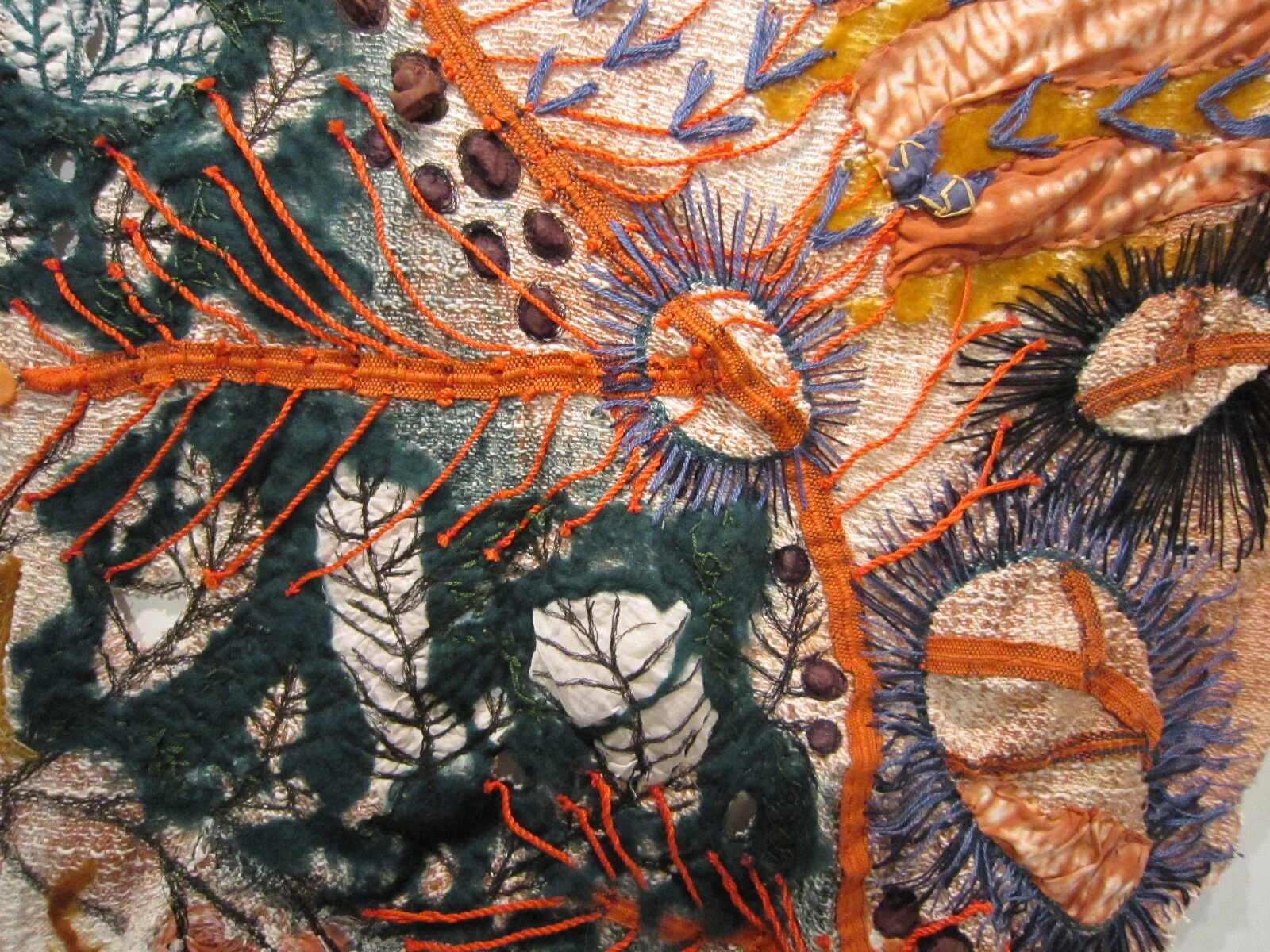

NEW BEAT
–
INTERNATIONAL STUDENT CONCOURS
Curated exhibition
DEC 5, 2011– JAN 18, 2012
The Fashion Gallery, The Hong Kong Polytechnic University
–
The exhibition New Beat: International Student Concours features innovative textile and fashion artworks created by twenty sixinternational design students who successfully demonstrated outstanding creativity and imagination through various material manipulation techniques, such as shibori, metal plate printing, embroidery, stitching, pleating, hand painting, dyeing with unusual or sustainable materials, beading, and origami.
Many of the artworks exhibit the use of shibori, a Japanese traditional resist dyeing technique involving the patterning cloth by tying the fabric with thread and subsequently dyeing it. Traditional shibori involves a time-consuming and detail-oriented process carried out by well-trained artisans. Even the choice of tying threads requires considerable attention because different sizes can affect the ultimate design. A variety of shibori effects can be achieved by using bound resist (kanoko), looped binding (miura), pleated and bound resist (kumo, known as spider design), stitch resist (nui), and diagonal pole wrap (arashi) [1]. These shibori techniques allow a cloth to record the shape, the type of resist, and the amount of pressure, and consequently transform a 2-dimensional cloth to 3-dimensional objects [2]. Young artists use shibori in combination with modern technology to express their creative ideas about nature, contemporary issues, memories of their loved ones, and traditional motifs.
The exhibition also highlights diverse regional characteristics and symbolism in artworks. Artists from different countries represent their own, or other’s traditional culture through their works: traditional wrapping cloth in the shape of fruits, decorative neck-pieces made by means of origami folding techniques, representations of calligraphy, traditional textiles, and eco-friendly textiles dyed with materials like eucalyptus and manuka.
The exhibition presents an opportunity for viewers to witness not only how young artists bridged the gap between traditional techniques and modern technology, but also how they developed their concepts in creative textile and wearable artworks.








